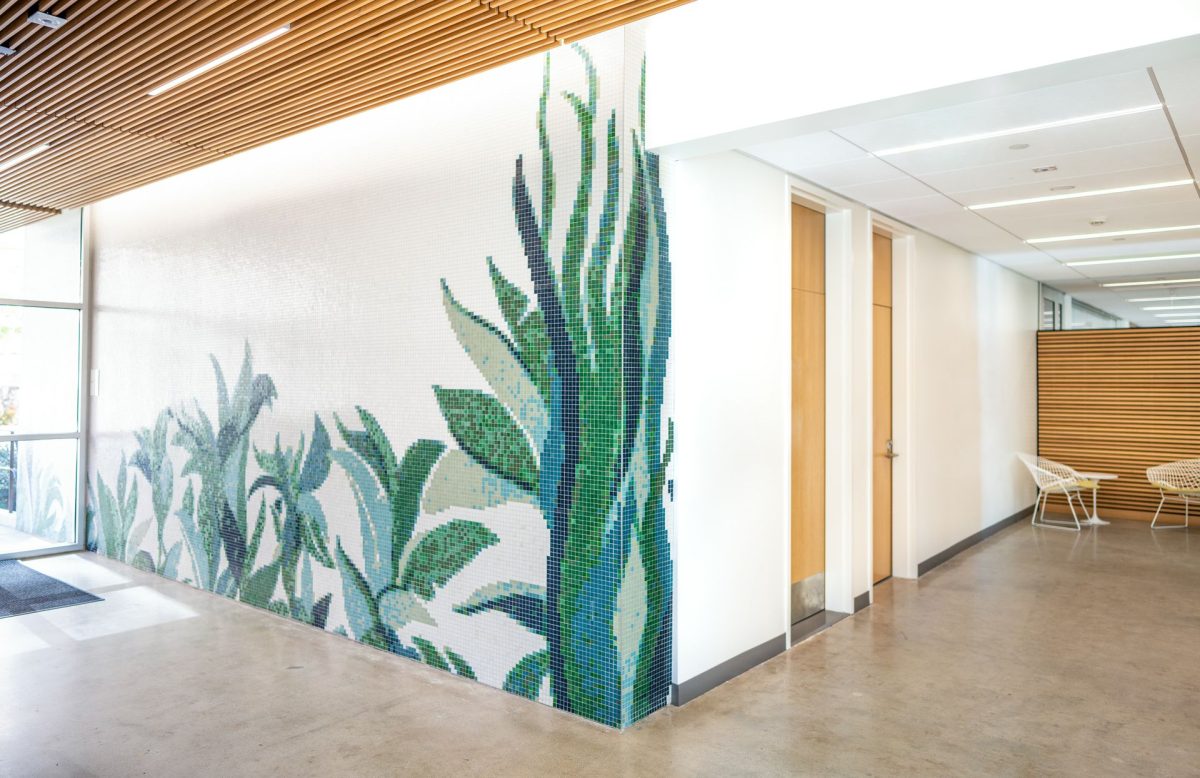
The renovation of UCLA’s Botany Building has achieved a LEED Platinum certification, recognizing its extraordinary achievements in sustainable design at the highest rank. The building is UCLA’s 65th LEED Certification, its 18th Platinum-rated building, and its first to reach that level of achievement under the demanding version 4 edition of the U.S. Green Building Council’s (USGBC) LEED Rating System. LEED stands for “Leadership in Energy and Environmental Design,” a voluntary, third-party rating system that benchmarks a building’s sustainable attributes and features across a range of categories.
The Botany Building project renovated and seismically strengthened an important midcentury building on UCLA’s campus, designed by renowned Los Angeles Architect Paul Revere Williams, the first African-American member of the American Institute of Architects College of Fellows and the posthumous recipient of its prestigious AIA Gold Medal. The revitalization of this historic gateway to UCLA’s Mathias Botanical Garden welcomes visitors with a new iconic mosaic mural that finally realized Williams’ original design vision, more than fifty years later after its inspirational first sketch – his lost detail in the original drawings was rediscovered during project research and now finally blossoms in the main lobby.
Modestly-scaled as viewed from Charles E. Young Drive, the Botany building faces beautiful garden views to the south, screened by innovative perforated metal sunshades that honor Williams’ design and also bring natural daylight and views deep into botanical offices, graduate study space, and laboratories. A three-level herbarium houses a library of seeds and preserved plant specimens, along with growth rooms for the incubation and study of plants. New shared study rooms and an upper-floor outdoor deck foster lively intellectual exchanges within a harmonious environment.
Restored building systems achieved 56.1% energy savings and 37.7% water savings, relative to code baselines. Remaining electrical demand in the building is sourced entirely from renewable generation. Interior finish materials and furnishings are healthy and VOC-free. Construction and Demolition waste streams were sorted and separated to maximize reclamation processes, and achieved a material recovery rate of 85.75%.
More details about the Botany project and its sustainable achievements may be found at the UCLA newsroom here, as well as in an online webinar presentation available through The American Institute of Architects California Council’s Climate Action Series: “Sustainable Restoration of Paul Revere Williams’ Mid-century Legacy at UCLA.”
